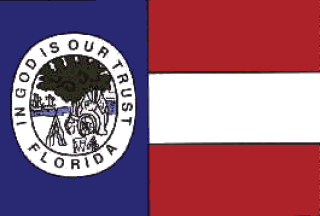|
One can rarely look at offerings of State of Florida currency without seeing the phrase “Milton signature”. In fact, all State of Florida notes issued in 1861, 1863, 1864, 1865 and 1870 bear the written name of a governor, but only a few 1861 issues bear their actual signature (1862 issues do not have a governor signature space). How can you know if you have a note with an actual signature of a governor? Well, in addition to the 1862 notes no 1863, 1864 or 1865 notes are known with actual signatures of the governors (Madison Perry in Sept. 1861 or John Milton from October 1861 – 1865 and Abraham K. Allison briefly in 1865). That leaves only the 1861 issues in question. In 1861 the State of Florida issued two types of $1, $2 and $3 notes and one each of the $5, $10, $20, $50 and $100 denominations, with several variations of some. The first printing of $1, $2 and $3 notes is identical to the second, but with the denomination spelled out in the upper right corner. The earliest are dated Sept. 16, and all with this date were actually signed by the out-going governor M. S. Perry. On October 1, 1861, Marianna plantation owner and ardent secessionist John Milton became governor and he signed some first printing notes with dates of Oct. 9 and Oct. 10. The Oct. 9th Milton-signed notes are among the rarest of all Florida notes. Gov. Milton also signed second series $1, $2 and $3 notes that are dated Oct. 10. Some of the $5 (extremely rare), $10 (extremely rare), $20 (rare), $50 (all 3 variations) and $100 1861 notes were also signed by Gov. Milton. It must be remembered that while Gov. Milton signed some of each, it was are only a very small percentage of the total number issued. How can the notes with actual Milton signatures be identified? Notes that bear his name but were not signed by him have the counter signature of the person who actually signed it for him. Their signature appears somewhere above his on the notes. Any note actually signed by John Milton will not have a counter signature above his. One other thing that identifies Milton’s signature is his unusual way of ‘crossing’ the ‘t’ in his name, as can be seen on the note pictured above. It should be noted that one of the counter signers also wrote their t’s in a similar fashion, so the lack of a counter signature is the best method to use in identifying the notes Gov. Milton actually signed. The condition of existing 1861 notes signed by Milton or Perry is almost universally poor. $100 and $50 (Milton only) notes are known in higher grades, but any below $50 are generally unheard of in even VF condition,with the vast majority being G, VG or F. We generally have a good selection of notes signed by Madison Perry and John Milton available, and they are all identified as such in our STATE NOTES listing. Scans of each are also available on the STATE NOTES page. Notes actually signed by Gov. Milton or Gov. Perry are all scarce and command a premium, selling for at least 50-75% and up to 150% more than the same note without their signature. Complete sets of notes signed by Milton and Perry are very rare, with only the most specialized Florida collectors generally pursuing them. Just four complete sets that include the extremely scarce Oct. 9th notes exist.
|

